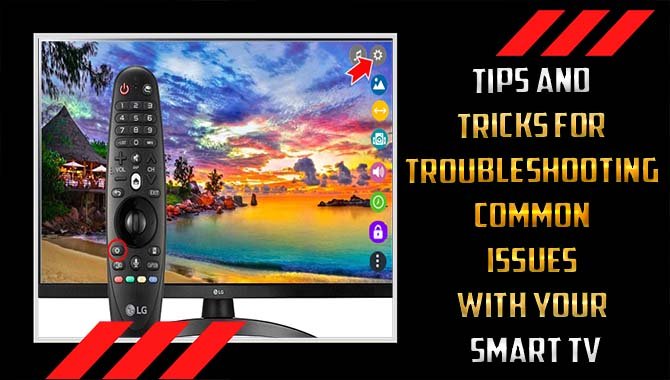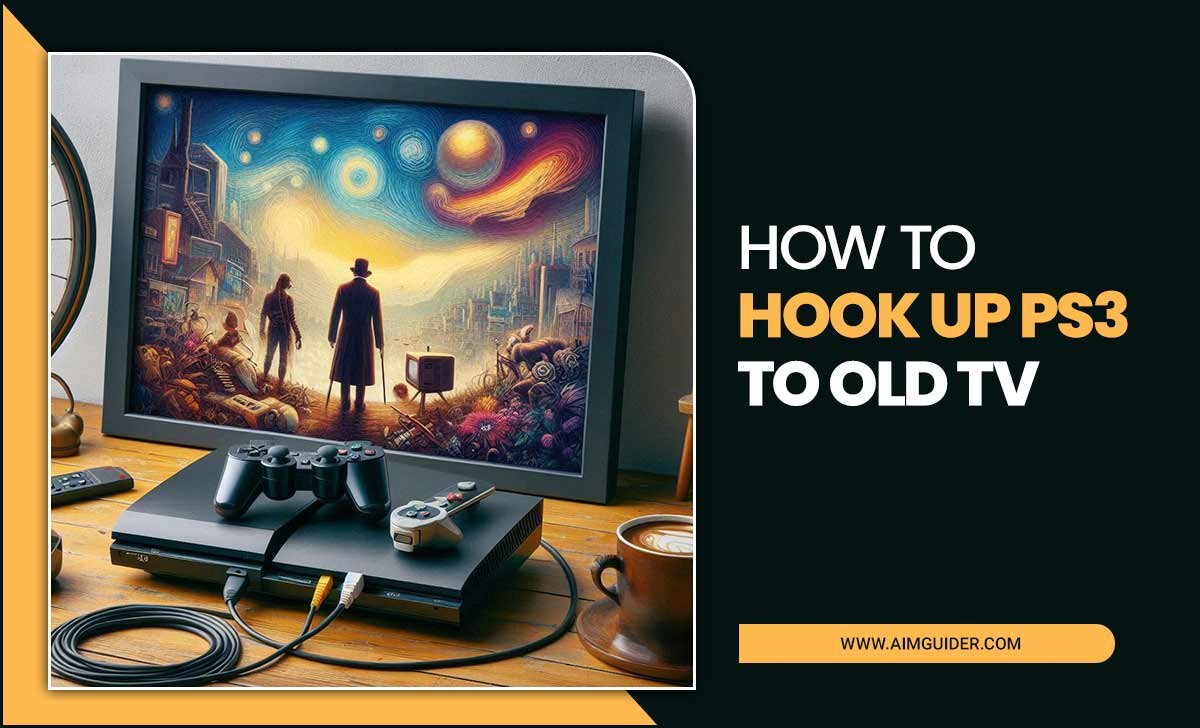Choosing the right TV size for your room is simple with a TV size calculator. Measure your viewing distance and use our guide to find the perfect fit, avoiding common mistakes and ensuring an immersive home theater experience. Get it right the first time!
Ever brought home a new TV, only to feel it’s either too big, like a movie theater screen that swallows your living room, or too small, making you squint to see what’s happening? You’re not alone! This is where a TV size calculator and a little know-how about your room come in handy. It’s frustrating when your new centerpiece doesn’t quite feel right. But don’t worry, getting the perfect TV size for your space is easier than you think. We’ll walk you through it, step-by-step, so you can enjoy your favorite shows and movies like never before.
Why the Right TV Size Matters: Beyond Just Inches
Picking the right TV size isn’t just about getting the biggest screen for your buck; it’s about creating a comfortable and immersive viewing experience. A TV that’s too large for your room can feel overwhelming, making it difficult to take in the whole picture without a lot of head movement. Conversely, a TV that’s too small can leave you feeling detached from the action, defeating the purpose of a great home entertainment setup. The sweet spot balances immersion with comfort, making your viewing sessions enjoyable for everyone.
Think about your favorite movie theater. They’ve designed the seating distance to give you a perfect view of the screen without strain. We’re essentially trying to replicate that feeling in your own home. The key factor in achieving this balance is understanding the relationship between your TV’s screen size and the distance you’ll be sitting from it. This is where our trusty “TV size calculator room fix” comes into play.
Understanding Viewing Distance: The Foundation of Your Choice
The most crucial piece of information you need is your “viewing distance.” This is simply the distance from your eyes to the TV screen when you’re in your usual viewing position. Grab a tape measure or use your phone’s measuring app – it’s that straightforward. No complicated calculations are needed at this stage, just a simple measurement.
Why is this so important? If you sit too close to a large TV, the pixels can become more noticeable, and you might have to move your head back and forth to see the entire screen, which is tiring and pulls you out of the movie. Sit too far from a small TV, and you’ll miss out on the finer details, the cinematic feel that a larger screen can provide.
For the best experience, experts often suggest a viewing distance that allows the screen to fill a certain amount of your field of vision without being so large that you feel overwhelmed. This is a core principle used in designing home theaters and cinema rooms.
How to Measure Your Viewing Distance: Easy Steps
- Identify Your Primary Viewing Spot: Determine where you’ll be sitting most often when watching TV. This is usually your favorite armchair or the middle of your sofa.
- Get Your Measuring Tool: A standard tape measure works perfectly. You can also use a measuring app on your smartphone, often found in utility or AR (Augmented Reality) apps.
- Measure Straight Across: Stand or kneel in your primary viewing spot and measure the straight-line distance from your eyes to where the TV screen will be. If you don’t have the TV yet, measure to where it will be mounted or placed on its stand.
- Note the Measurement: Record this measurement in feet or inches. Knowing this number is the first big step to finding your ideal TV size.
Using a TV Size Calculator: Your Digital Assistant
Once you have your viewing distance, it’s time to use a TV size calculator. These tools are designed to take your viewing distance and recommend an optimal TV screen size. Some calculators also consider the TV’s resolution (like 4K or 1080p) as higher resolutions allow you to sit closer to larger screens without seeing individual pixels.
Think of it like this: a calculator is an expert that has already done the research and has the formulas ready. All you need to do is give it one piece of information – your viewing distance. Many reputable electronics retailers and tech review sites offer free, easy-to-use TV size calculators on their websites.
For example, if your viewing distance is 8 feet, a standard calculator recommendation might be a TV in the 50-65 inch range. However, this can vary slightly depending on the calculator and its specific algorithms, often considering the THX recommendation or SMPTE recommendation for viewing angles.
Popular TV Size Calculator Recommendations
Here’s a general guide based on common recommendations. Remember, these are starting points, and personal preference plays a big role.
| Viewing Distance (Feet) | Recommended TV Size (Inches, Diagonal) | Notes |
|---|---|---|
| 4-5 feet | 32-43 inches | Ideal for smaller rooms or secondary TVs. |
| 5-7 feet | 43-55 inches | Good for average living rooms and bedrooms. |
| 7-9 feet | 55-75 inches | Great for larger living rooms, creating a more cinematic feel. |
| 9-12 feet | 75+ inches | Suits large open-plan areas or dedicated home theater rooms. |
| 12+ feet | 85 inches and above | For very large spaces where an immersive experience is key. |
These numbers are based on general viewing angles. For instance, the Society of Motion Picture and Television Engineers (SMPTE) recommends that the TV screen should fill about 30 degrees of your field of vision. For 4K TVs, you can often sit closer than with older HD TVs because the pixel density is so much higher, meaning you won’t see individual pixels. A tool that factors in resolution can give you an even more precise recommendation. You can find excellent tools by searching for “TV size calculator” on sites like rtings.com, which provides detailed reviews and tools for home theater enthusiasts.
Room Considerations: Beyond the Distance
While viewing distance is king, your room’s layout and how you plan to use the TV introduce other important factors. It’s not just about fitting the TV into your space; it’s about making it feel like a natural part of your room.
Wall Mounting vs. Stand Placement
Wall Mounting: Mounting your TV on the wall can save floor space and offers a sleek, modern look. However, it also changes your effective viewing distance. When wall-mounted, the TV is often placed higher on the wall. This can mean you’re slightly further away, or you might be tilting your head up, which can be uncomfortable for long viewing sessions. If you plan to wall mount, measure the distance from your seating area to where the TV’s center will be.
Stand Placement: If you’re using a TV stand, the distance is usually more straightforward. Consider the height of the stand and your seating. The bottom of the screen should generally be at or slightly below eye level when you’re seated.
Room Dimensions and Layout
A large, open-plan living area can accommodate a much larger TV than a snug, cozy den. A massive TV in a small room can feel like it’s looming over you, making the space feel cramped. Conversely, a tiny TV in a vast room can look lost and insignificant. Consider the overall scale of your room and the furniture arrangement.
Pro Tip: Before buying, use painter’s tape to mark out the dimensions of the TV you’re considering on your wall. This visual aid can be incredibly helpful in gauging how it will fit and feel in your space.
Lighting Conditions
Ambient light in your room affects how you perceive the TV. If your room is very bright withLots of windows, a larger screen might be beneficial to combat glare and maintain contrast. In a darker room, you might prefer a slightly smaller screen to avoid excessive brightness that can cause eye strain. Think about when you watch TV most often – is it in a bright, sunlit room or a darkened den?
Purpose of the TV
Are you a hardcore movie buff who wants an immersive, cinematic experience? Or is the TV mainly for casual viewing of news and occasional sports? Gamers also have specific needs; they often prefer larger screens with minimal input lag to get the most out of their gaming sessions.
For a truly cinematic feel, experts from THX, the company founded by George Lucas, recommend that the screen should fill about 40 degrees of your field of vision for viewers at home. This level of immersion is typically achieved with larger screen sizes relative to viewing distance.
Calculating for Different TV Resolutions: 4K vs. 1080p
The resolution of your TV significantly impacts the ideal viewing distance. Higher resolutions mean more pixels packed into the same screen size, creating a sharper image. This allows you to sit closer to a larger screen without noticing individual pixels.
- 1080p (Full HD): With lower pixel density, you need to sit further back to avoid seeing the pixel structure. A common recommendation is to sit about 1.5 to 2.5 times the screen’s diagonal measurement away.
- 4K (Ultra HD): The significantly higher pixel count means you can sit much closer – typically 1 to 1.5 times the screen’s diagonal measurement – and still enjoy a sharp, detailed image. This is why you can get away with larger TVs in similarly sized rooms compared to older HD models.
Given that 4K is now the standard for most new TVs, the “sit closer” rule applies broadly. This is a key reason why larger TVs have become so popular in recent years. They offer a more engaging experience, especially with the detailed content available in 4K.
A Practical Example with 4K
Let’s say you have a viewing distance of 7 feet (84 inches). For a 4K TV, the recommended size is often calculated by dividing your viewing distance by 1 to 1.5.
Distance (inches) / 1.5 = Smaller end of recommended size
84 inches / 1.5 = 56 inches
Distance (inches) / 1 = Larger end of recommended size
84 inches / 1 = 84 inches
So, for a 7-foot viewing distance and a 4K TV, a range from 56 to 84 inches would be considered. Many people find a 65-inch or 75-inch TV to be a sweet spot in this range, offering a great balance of immersion and comfort.
Common Pitfalls to Avoid When Choosing TV Size
Even with a calculator and guidelines, it’s easy to make mistakes. Here are some common ones to steer clear of:
- Buying based solely on room size without measuring distance: A big room doesn’t automatically mean a huge TV if your seating is close.
- Ignoring ambient light: A very bright room can make a smaller TV struggle, while a very dark room can make a huge, bright TV uncomfortable.
- Forgetting about wall mounting effects: Wall mounting can change the perceived distance and viewing angle.
- Not considering personal preference: Some people simply prefer a more subtle viewing experience, while others want to be completely enveloped.
- Overlooking future changes: Will you rearrange furniture? Move to a new place? Think about flexibility.
- Assuming all calculators are the same: Different calculators use slightly different formulas and recommendations, so comparing a couple can be wise.
Advanced Tips for the Perfect TV Setup
Once you’ve selected the TV size, think about how you’ll position it for the best experience. This can elevate your home entertainment from good to great.
Optimal TV Height
The ideal height for your TV is based on your eye level when seated. The center of the screen should generally be slightly below your eye level. This prevents neck strain during long viewing sessions. If you’re wall-mounting, consider a mount that allows for tilt adjustment.
A good rule of thumb is that the bottom 1/3 of the screen should be at or slightly below eye level. For a 65-inch TV, mounted at a typical height, this could mean the TV is around 40-42 inches from the floor to its center.
Viewing Angle Considerations
While primary seating is key, consider if others will be watching from off-angles. If you often have guests or family members sitting to the sides, you might want to:
- Choose a TV with good off-axis viewing angles (many modern LED and OLED TVs excel here).
- Ensure the primary viewing position aligns with the center of the screen.
- Consider a TV mount that allows some swivel.
The ideal viewing angle for most LCD and LED TVs is under 40 degrees from the center. OLEDs typically offer wider viewing angles without significant color or brightness degradation. For practical purposes, ensure that your main seating area is within a comfortable range of the screen’s center.
Sound System Integration
A great TV deserves great sound. While built-in TV speakers have improved, they often lack the depth and richness of a dedicated sound system. Consider where you’ll place a soundbar or surround sound speakers. The size of your TV can also influence the scale of your audio setup – larger screens in larger rooms might benefit from more robust audio solutions.
For more on audio, check out resources like Crutchfield’s learning center on home theater acoustics. They offer detailed insights into room setup and audio placement that complement your visual setup.
FAQ: Your TV Size Questions Answered
Q1: How far should I sit from a 65-inch 4K TV?
For a 65-inch 4K TV, with a viewing distance factor of 1 to 1.5 times the screen diagonal, you should sit between approximately 5.4 feet (65 inches 1) and 8.1 feet (65 inches 1.5) away. Many people find 7-8 feet to be very comfortable.
Q2: Does it matter if my room is small?
Yes, absolutely. In a small room, a TV that’s too large can be overwhelming. Use your viewing distance measurement and a calculator to find a size that fits comfortably, even if it means choosing a slightly smaller screen than you might ideally want.
Q3: Can I use my phone to measure viewing distance?
Yes! Many smartphones have built-in measuring apps that use augmented reality (AR) to measure distances. Simply open the app, point your camera at where the TV will be, and measure the distance from your primary seating position.
Q4: What’s the difference between a TV size calculator and just multiplying?
Multiplying the diagonal by a factor is a good rule of thumb. A calculator might incorporate more variables, like TV resolution (4K, 8K), and offer slightly refined recommendations based on industry standards and user data. They provide a quick, often more precise, starting point.
Q5: Should I always go for the biggest TV that fits my budget?
Not necessarily. While bigger can be better for immersion, if a TV is too big for your viewing distance or room, it can be uncomfortable, pixelated, or overpowering. Prioritize optimal viewing experience over sheer size.
Q6: How does TV resolution affect ideal size?
Higher resolutions like 4K and 8K have more pixels, so you can sit closer to a larger screen without seeing individual pixels. For 4K, you can sit closer than for 1080p, making larger screen sizes more practical for typical living rooms.
Q7: What is the SMPTE viewing angle recommendation?
The Society of Motion Picture and Television Engineers (SMPTE) recommends that the TV screen should fill approximately 30 degrees of your field of vision for optimal viewing in a home environment. This translates to a specific viewing distance relative to screen size.
Conclusion: Your Perfect Picture Awaits
Finding the right TV size for your room doesn’t have to be a guessing game. By understanding your viewing distance, utilizing TV size calculators, and considering your room’s unique features, you can make an informed decision that enhances your home entertainment. Remember, the goal is to create a comfortable, immersive, and enjoyable viewing experience. Whether you’re mounting it on the wall or placing it on a stand, always measure, use the tools available, and trust your instincts about what feels right for your space. Happy viewing!








